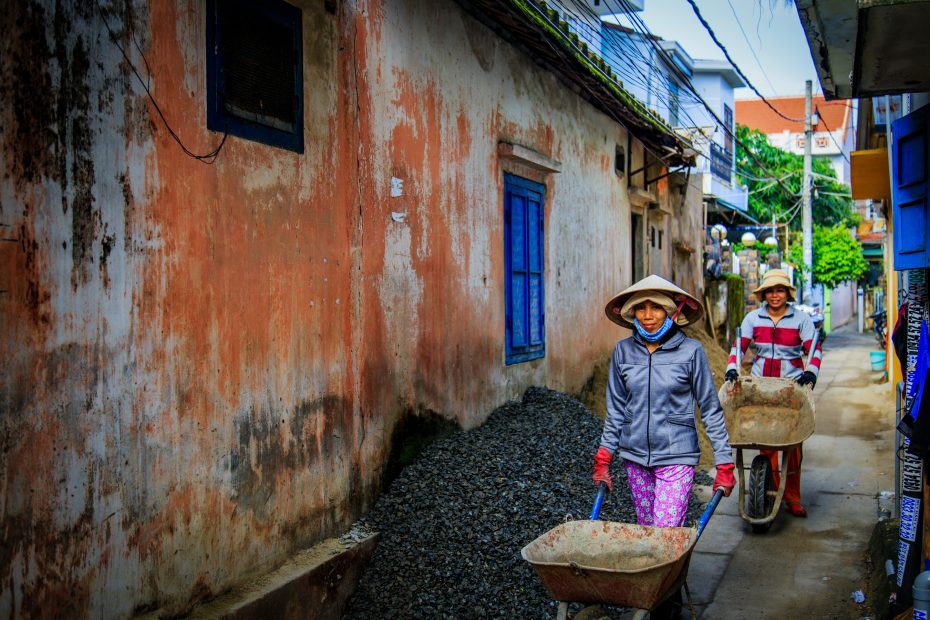Table of Contents
Introduction
Hanoi, the capital of Vietnam, is a city where the ancient and modern collide in fascinating ways. Founded over 1000 years ago, Hanoi has transformed from a provincial center into a major global metropolis, all while preserving its distinctive history and cultural identity. This makes Hanoi an especially dynamic and compelling place to visit.
Key Historical Sites
At the heart of Old Hanoi lie several landmarks that connect visitors to the city’s past. Hoan Kiem Lake offers beautiful scenery and temples alongside legends of ancient turtles and medieval warriors. The Temple of Literature, built in 1070, honors Confucius and Vietnam’s scholar-officials with ornate architecture and tranquil courtyards. And the stately Ho Chi Minh Mausoleum pays tribute to the 20th-century revolutionary leader with Soviet-inspired grandeur.
Blend of Old and New Architecture
Hanoi’s streets are a mosaic of architectural influences. Graceful French colonial buildings with shuttered windows and wrought-iron balconies contrast with sleek modern skyscrapers and commercial developments. It’s common to find a crumbling 19th century home next to a brand new high-rise. This side-by-side view of historic and contemporary styles adds to Hanoi’s distinctive flair.
Vibrant Food Scene
When it comes to cuisine, Hanoi truly brings old and new together. Street food stalls serve beloved local dishes like pho noodle soup and banh mi sandwiches. At the same time, chic new restaurants and cafés fuse traditional ingredients with global influences. This diversity and innovation creates one of Asia’s most exciting dining destinations.
Dynamic Art Scene
Centuries-old theatres and musical venues stage unique performances like the famous water puppet shows. Hanoi also has an emerging contemporary art community, with indie galleries and events gaining international attention. Travellers can experience both traditional and modern Vietnamese culture through this multifaceted art scene.
Contrasting Lifestyles and Neighborhoods
The chaotic Old Quarter still buzzes as it did in medieval times, with motorbikes zipping through markets and street vendors touting their wares. Nearby, the wide tree-lined boulevards of the French Quarter are filled with upscale cafés and boutiques. And on the outskirts, gated luxury villa communities seem a world away from Hanoi’s frenetic urban core.
Economic Growth and Infrastructure
Recent economic reforms and foreign investment have transformed Hanoi. Glass office towers and shopping malls represent Vietnam’s shift toward capitalism. Upgrades like new metro lines, airports, and highways complement Hanoi’s modernization. But increased traffic and construction often makes getting around more difficult.
Preserving Cultural Identity
Even while rapidly developing, Hanoi emphasizes arts, heritage preservation, and tradition. Historic sites receive protection and restoration. Festivals, street performances, and traditional crafts maintain their significance. Vietnam requires foreign corporations to respect its culture. This helps Hanoi retain its distinct ambience amidst change.
Challenges of Rapid Urbanization
Hanoi’s growth has also created environmental problems like air pollution, traffic congestion, and litter. The population boom strains infrastructure, causing frequent power outages. As wealth inequality rises, many struggle with the higher costs of living. Managing the stresses of urbanization remains an ongoing challenge.
Tourism Industry
Today Hanoi draws visitors from across the globe. Tourism provides revenue but also causes growing pains. Services like hotels and tours meet increasing international and domestic demand. However, problems like price gouging and overcrowding at landmarks demonstrate the need to balance tourism with sustainable development.
Future Outlook
Hanoi in the 21st century will likely be defined by further expansion and transformation. But ideally, planners will retain the essence of Hanoi’s appeal – the fusion of heritage with modernity that makes it enchanting. With smart management, Hanoi can preserve its past while creating a bright future.
Conclusion
With its blend of historical charm and cosmopolitan energy, Hanoi offers an engaging travel experience that connects the ancient past with recent progress. The city’s layered architecture, diverse cuisine, artistic flair, and contrasting neighborhoods come together to create a dynamic capital. Hanoi may undergo rapid change, but its spirited culture and alluring contradictions endure. Visitors will keep rediscovering one of Asia’s most beguiling destinations where history meets modernity.
Frequently Asked Questions
What are some must-see historical sites in Hanoi?
Some top historical sights are Hoan Kiem Lake, Temple of Literature, Ho Chi Minh Mausoleum, One Pillar Pagoda, and the Old Quarter.
Where can I experience Hanoi’s nightlife and arts scene?
Popular nightlife areas include Ta Hien Street and the Old Quarter. For arts, visit the Hanoi Opera House, Vietnamese Women’s Museum, and performance venues around Hoan Kiem Lake.
What local dishes should I try in Hanoi?
Can’t-miss Hanoi foods include pho noodle soup, banh mi sandwiches, bun cha grilled pork, egg coffee, and street food staples like nem ran spring rolls.
How easy is it to get around Hanoi as a tourist?
While traffic can be chaotic, Hanoi’s compact size makes it walkable. Grab taxis and new metro lines also help visitors navigate the city.
What is the best time of year to visit Hanoi?
Fall and spring have nice weather and fewer crowds. Summer is hot and humid. Winters can be cool and damp but have cultural events like Tet New Year.
